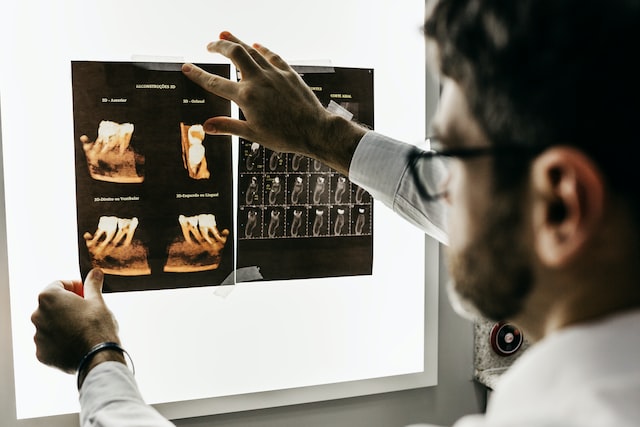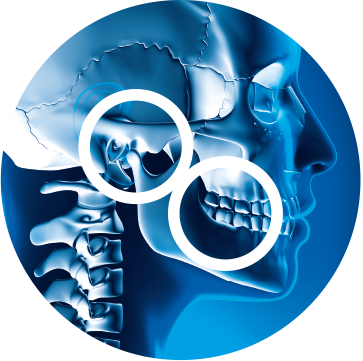Advanced diagnostic imaging has become an indispensable part of dental treatment. It allows early detection of various types of lesions and is crucial in the preparation of strategies, control of treatment effects and prevention.
It is an extremely important field of modern medicine that, by performing imaging tests, helps diagnose oral conditions. At Mio-Dent, we perform five types of such examinations:

Spot photo of the tooth
The most commonly performed type of photo. It is distinguished by its high resolution, showing selected teeth with great accuracy and, more precisely, their crowns, roots and surrounding hard tissues. Increases the effectiveness of treatment in caries treatment, surgical and endodontic procedures.
Pantomographic photo
It provides an opportunity to look at teeth in a wide range – from the maxillary sinuses to the branches and mandibular body. It also shows retained teeth, supernumerary teeth, and unerupted tooth buds. It is usually performed at the beginning of any comprehensive dental treatment. It proves especially helpful in the treatment of periodontal disease.
Cephalometric radiograph
Allows examination of the lateral part of the skull, imaging bone structures, soft tissues and paranasal sinuses. It is performed primarily in orthodontics – diagnosing malocclusion and planning treatment strategies. It documents the condition before the application of braces and after their removal.
Tomography of teeth
CBCT computerized tomography presents an accurate, three-dimensional image of the teeth and sinuses so that any treatment can be precisely planned. It is primarily used in root canal, implant, surgical, periodontal and orthodontic treatment, as well as in diagnosing temporomandibular joint and sinus diseases. Tooth tomography is also popularly used because of its lower dose of X-rays than a classic dental X-ray.
Dental X-ray
X-rays are an essential part of any dental diagnosis. A dental X-ray is a painless and quick examination. It relies on the use of X-rays, so it is performed only as prescribed by the doctor. To minimize the impact of radiation, the patient is given a special apron to wear before the picture is taken. The contraindication to undergo this type of diagnostic imaging is pregnancy in any of its phases. In addition, dental X-rays are also not performed for children under the age of five. In our office, we use specialized, modern equipment to perform diagnostic imaging, allowing our doctors to accurately and efficiently plan and perform various procedures.
